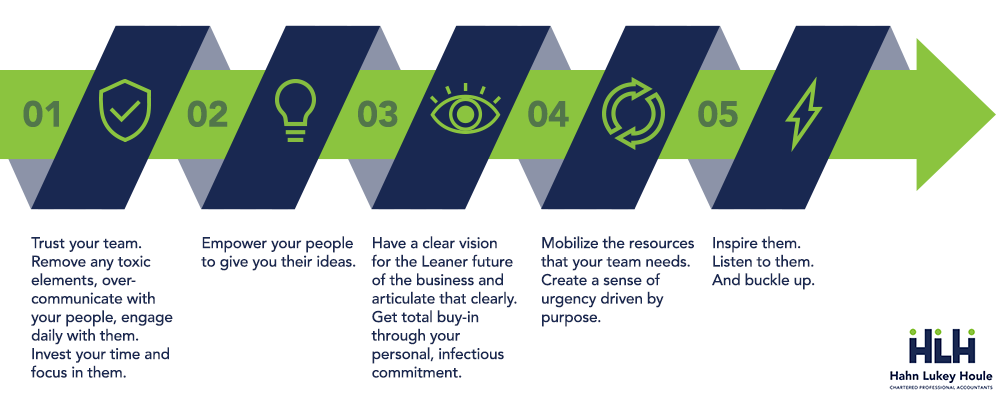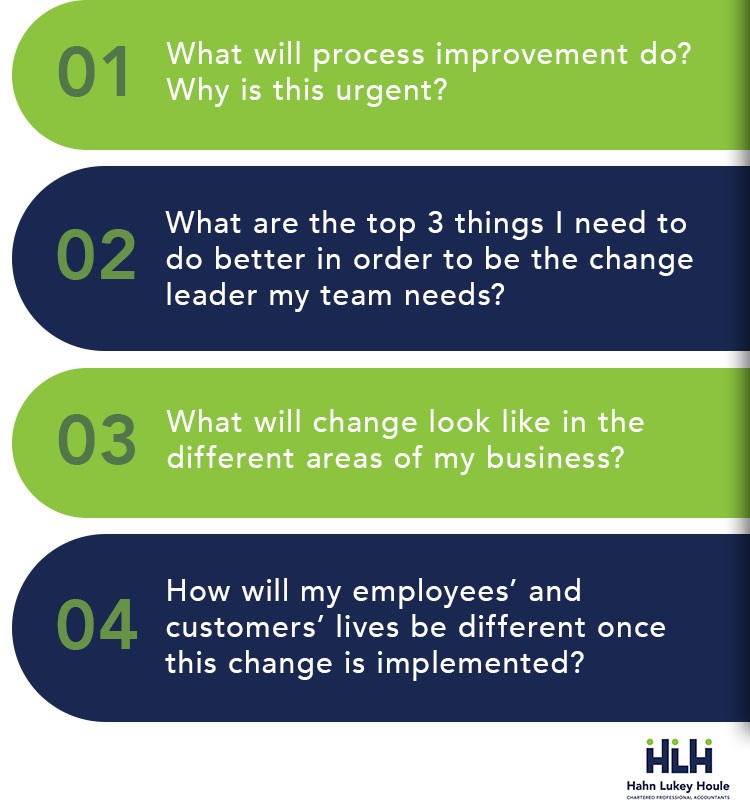
Lean principles to lead culture process involvement
15 April 2019
growthzone
You look at your net profit and it’s not where it should be. You can feel the waste.
So you decide to take some action. You’ve heard about Process Improvement, possibly at an HLH seminar or read “2 Second Lean.” You talk to your core team and they’re on board.
Now there’s a fork in the road. We typically only see it through hindsight, but it’s there. There are 2 ways to implement change. Neither option is “wrong,” although one of them will impact that net profit more.
Change Management
This is the kind of change that is planned, deliberate, and typically small. Here’s the process:

You hope that the change will stick when the boardroom turns its focus to the next matter. It usually doesn’t. That’s because if change is driven by a formal plan, it will evaporate when the plan expires.
Change Management is often effective and it can save you money, especially if it’s consistent. It also allows the boardroom to retain control of the entire process in exchange for the process being limited to containable targets.
Change Leadership
This is the sort of change that focuses on a cultural shift over a plan. It’s about empowering your entire team (not just specific stakeholders) until they’re driven to deliver unpredictable, uncontrollable, paths to Process Improvement.
It’s like injecting your entire business with a sense of urgency. It can get out of hand, can drown you in multiple visions that often compete with each other, and is the only path to lasting, systemic change.
This is how that net profit number actually changes:

Change Leadership turns your entire team into a collective engine for change. Don’t expect that engine to take you to predictable places. Guide it with your vision, and be open to the experience.
Questions towards Leadership?
Change Management empowers stakeholders to a degree, but it’s still driven and controlled by the boardroom. It’s an extension of standard management practices and mindset.
If you want to become a Change Leader, you must first trust your team. If you mistrust them to the point of micromanaging, it will be impossible to trust their new ideas to move you forward.
Articulating a vision to your team is different than emailing them exactly what the change process will look like. The latter is a to-do list, the former is an agent of inspiration.
To inspire them, you must have a clear vision. Here are a few questions to ask yourself as you move towards that:

The more honestly you can answer those questions, the more urgency you’ll be able to spread across your business. Get inspired, inspire others, then let them flourish.
Systemic change can be planned in advance. It’s about creating a sense of urgency to drive forward unproven ideas. Your team members aren’t Change Consultants, so don’t expect polish. Polish is for small and temporary change; collective urgency is systemic and sustainable.
“Change your thoughts and you change the world.”
- Norman Vincent Peale
Blog post submitted by Chamber member Hahn Lukey Houle
